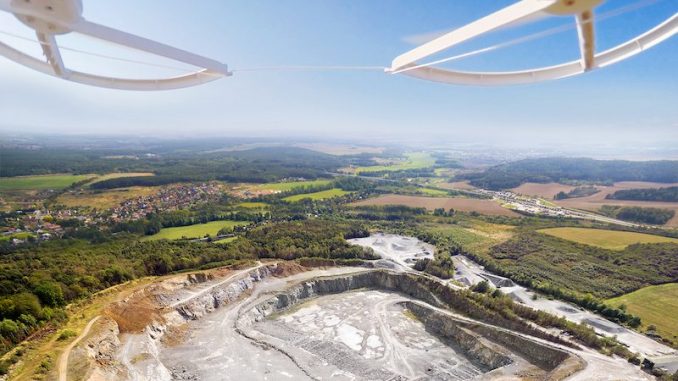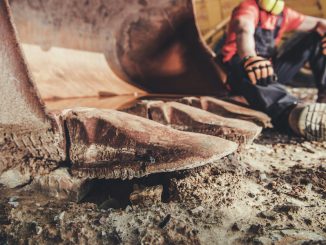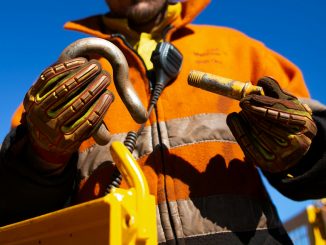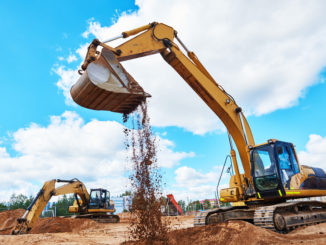
View the complete article here.
Mining has always been a risky business proposition. Rising operating costs, safety issues, and broad fluctuations in commodity prices are just a few of the major obstacles to running a successful mining business.
Rising operating costs
Wages, although historically low, are increasing in some countries. In Australia, advertised wages for mining workers were up 35%. Mines today are more complex. As older mines reach the end of their lifecycle, new mines require companies to go deeper underground for less quality ore. Although technology ultimately increases the bottom line, it’s an investment with considerable cost.
Safety issues
Until 2001, mining was the most dangerous occupation in the world. The death rate was 23.5 per 100,000 workers. Construction – considered a very risky occupation – has a death rate of 12.2 per 100,000 workers. Fortunately, the mortality rate has reduced considerably over the years. Well, in the U.S. In China, the death rate has gone up. China accounts for 80% of work-related miner fatalities in the world. For comparison, in 2004 China had 6,027 mining-related fatalities. The U.S. had just 28. Lack of safety regulations accounts for most of the mining-related deaths in China.
The Greatest Risk in the Mining Industry
A less obvious risk to a mining company is the ability to get – and keep—a license to operate (LTO). Governments and communities are stronger stakeholders than in the past. They are more aware of the environmental impacts of mining and have higher expectations and requirements that mining operators must meet. According to an EY (Ernst & Young) report, Top 10 business risks facing mining and metals in 2019-20, LTO moved from number seven on the list of business risks in 2018 to number one in 2019.
Mining companies face ever-shifting licensing requirements. For example, Australian miner Lynas Corporation’s rare earth minerals processing plant was reviewed by the newly elected Malaysian government in 2018. Auditors found six years’ worth of radioactive material that had not been removed. Lynas must now develop a plan to remove the radioactive waste or the Malaysian government will not renew their operating license.
The Lynas Advance Material Plant (LAMP) was fiercely opposed by environmental groups and the community during its construction in 2012. This is a situation that mining companies should see as an opportunity for risk mitigation. Knowing that these community concerns could ultimately result in new LTO requirements, LAMP could have reduced the risk of non-renewal by partnering with the community from the beginning.
Information resources such as CommDev can help mining companies better plan projects and find successful case studies that model how they can work with stakeholders.
Mining Innovations
There are six crucial innovations that today’s mining companies should strongly consider implementing. The good news is that these innovations lower costs and increase safety.
#1 – Mining Simulators
Mining simulators are an effective and safe way to train employees on the use of various types of mining equipment. Like a flight simulator, a mining simulation can create the experience of using a large and complicated piece of equipment. Simulators allow workers to learn in a controlled environment. The simulation can be setup to mimic specific site conditions. A mining simulator can also recreate a whole mining operation.
Simulators can be as simple as a software program to train workers on equipment operation. For more complex equipment, a screen can be surrounded by wheels and levers. Some simulators are mounted on a track or wheels and include pneumatic operations to train workers in equipment such as cranes and drills.
There are many benefits to mine simulation. Employees can experience different scenarios that will improve their performance on a real job site. Workers can also use simulators to determine the most efficient equipment placement. They can test different work plans to determine how best to handle operations such as drilling and excavating.
Most importantly, mining simulators protect people and equipment. Workers trained on simulators are more prepared to handle difficult situations that often arise on the job site. Worker competence reduces accidents. Proper use of equipment protects a mining company’s major investments. Workers can refresh their skills using mining simulation. They can ramp up more quickly on a new project as well.
#2 – Underground Excavators
One of the most dangerous aspects of mining is drilling and blasting. Holes are drilled in the rock and filled with explosives. Once detonated, the risk of death and injury is high from flying rock, destabilized ground, and the release of toxic fumes. Autonomous drilling rigs and excavators keep humans out of harm’s way and standardizes the blasting process. Battery-operated drill rigs eliminate emissions.
Drilling rigs can be operated remotely. An employee can manage multiple rigs from one offsite control station. Rigs can be on the same pattern or in separate pits. The autonomous rig also handles non-drilling activities like area inspection prior to tramming, raking the cutting pile, and plugging the hole.
An Atlas Copco Pit Viper drill rig was tested by an Australian mine – from 837 miles away.
Goldcorp is expanding its use of autonomous drilling. The company retrofitted two Epiroc Pit Viper PV-351 rigs with autonomous features in its Peñasquito gold mine in Mexico in 2018. More rigs are scheduled for installation this year and in 2020. They will be managed in a control room that can handle up to 12 drill rigs. The automation-ready Pit Viper PV-271s protect Goldcorp’s workers from the hazards of open pit drilling.
The autonomous drill rigs do more than protect humans. They achieve higher penetration rates, improve meters per operating hour, and reduce operating costs. Goldcorp reports that operating hours per day, per drill, has increased 25%. Meters drilled per hour has risen 12%. The company has realized productivity gains of 40% in meters per day.
QY Research reports that the global Underground Mining Equipment market was 17.3 billion dollars in 2018. They estimate a compounded annual growth rate (CAGR) of 6.8% between 2019 and 2025.
#3 – Drones
Drones, or Unmanned Aerial Vehicle Systems, (UAV or UAS) are now used by miners to handle maintenance, monitoring, and mapping. Drones benefit a miner’s bottom line and safety record. Advances in drone design and artificial intelligence (AI) are helping miners reach heights and depths once inaccessible – or just dangerous – to workers. For example, BHP Billiton uses drones to ensure a site is clear before they start blasting. The drone can also track fumes after the blast.
Maintenance
Some mining equipment, such as bucket wheel excavators (BWEs), are mammoth. In fact, the MAN Takraf RB293 is listed in the Guinness Book of World Records. A drone can be used to fly over and around the 310-foot high, 722-foot long beast and detect maintenance issues. However, technology can only go so far. Project managers are averse to scheduled maintenance because they don’t want to go offline. But scheduled maintenance often results in less downtime and reduces operating costs compared to a “deal with it when it breaks” approach. Drones can also quickly deliver spare parts to the mining site, getting the mine back online faster.
Mapping
In 2015, BHP Billiton started testing drones at its Queensland mines. BHP produces iron ore, metallurgical coal, and copper. They used drones carrying military-grade cameras to take 3D maps of the sites. The company saves about 5 million dollars a year by using drones for site-mapping instead of planes. They are also developing supercomputers to increase the speed at which the company can analyze the site and make decisions.
Monitoring
BHP also uses drones for monitoring stockpiles and ensuring compliance. This helps the company improve safety and productivity. Drones can monitor traffic on the mine site and ensure an area is clear before the blasting begins.
What’s Hot in Drone Technology
Australian start-up Emesent, a spin-off of The Commonwealth Scientific and Industrial Research Organization (CSIRO) (a department of the Australian Government}, is investing in the Hovermap product. These autonomous drones can determine the suitability of underground areas for mining more safely than humans – and far more accurately. Investigating prospective mine locations has proven to be very dangerous. Just ask the nine workers who were trapped for 77 hours in the 2002 Quecreek mine disaster. A Hovermap drone could have detected the passage that the miners broke into. If they had known the passage existed, they would not have broken into it. When they did, it flooded the mine. They were lucky to have gotten out alive.
The world’s first autonomous beyond-line-of-sight drone flight took place in Northern Star Resources’ Jundee gold mine 600 meters below the surface. The drones have also been used in the US Defense Advanced Projects Agency’s Subterranean Challenge. The challenge tests mapping and search solutions for underground areas.
How Hovermap Works
A Hovermap does not need above-ground services such as GPS to find their way underground. (GPS doesn’t work so well underground anyway.) It uses simultaneous localization and mapping (SLAM) to construct 3D images of the world around them. The Hovermap drones use light detection and ranging (LiDAR) to navigate. This entails firing a laser light at nearby surfaces and measuring how the light is reflected. They use LiDAR to find their way as they map the environment. This is why a Hovermap doesn’t run into walls. Not at all like a Roomba vacuum robot that slams against walls and furniture until it “learns” its environment.
Hovermap drones can record levels of gases. It can take photos and record videos that help construct diagrams of the underground tunnels.
#4 – 3D Printing & Mapping
With large, specialized equipment, downtime due to malfunctioning machinery is always a risk for a mine. Mines are typically located in remote locations with rough terrain. Getting parts delivered quickly is challenging. 3D printing is a promising solution since it would build specialized parts onsite. Fortescue Metals Group (FMG) is working to make 3D printing a reality for on-site, on-demand parts manufacturing. In October of 2018, FMG signed an agreement with Aurora Labs to develop 3D printing for the mining industry.
3D Printing
There are three major benefits to onsite 3D printing:
- Quickly making parts. Currently, a mine could wait from a few weeks to as much as 18 months for a part. 3D printers will make parts on demand.
- Reducing onsite parts inventory. Site managers must anticipate which spare parts may be needed and keep them in stock on site. The ability to print parts as needed greatly reduces (and could eliminate) the need for this inventory.
- Reducing costs. Dave Budge, CEO of Aurora Labs, says their modeling shows that mining companies can lower costs up to 90%. Part of the savings is due to Aurora Labs’ innovative process. Rather than printing just one layer at a time, the device allows separate layers to be printed simultaneously. Mr. Budge claims that this results in a high production rate and higher quality. This technology greatly reduces the build time.3D Mapping
3D Maps
3D maps can be printed with a high degree of detail and accuracy. Using the data collected by drones above and below ground, a 3D model can be created and printed out with a 3D printer.
#5 – Underground Telecommunications
Underground telecommunications are another way to increase productivity and safety.
In 2011, Toronto-based Dundee Precious Metals decided it needed to “lift the lid” off its mining operation in Bulgaria. The goal was to improve data flow between workers, vehicles, and ore in the copper and gold mine. A couple of years later they developed a complete underground communications system. No easy feat—miners operate in a brutal environment not hospitable to Wi-Fi equipment. Enclosures to keep the data access points clean, dry, and crush-proof were the more challenging part of the system to develop.
#6 – Automation
Taking humans out of the mining operation is a goal presently out of reach for most companies. The stated goal for automation is safety. But, as automation evolves, and the cost goes down, its use may take over the industry. In fact, Resolute Mining’s fully automated Mali operation is up and running. Rather than retro-fitting an existing mine, Resolute designed the sublevel mine to take advantage of autonomous technology. Fiber optics were used to ensure reliable communication between the mine and above-ground operations.
Two key areas of automation are driverless vehicles and robots.
Driverless vehicles
Between 2000 and 2012, 86 workers died in truck-related incidents at mine sites. Over half of mine workers’ severe injuries were related to driving trucks. More workers were hurt while repairing trucks. Autonomous vehicles take away this risk.
Komatsu operates and manages Autonomous Haulage Systems (AHS) for mines around the world. Their self-driving mining trucks can haul between 200 and 400 tons. In October of 2018, their AHS trucks moved 2 billion metric tons of material.
The Volvo Group has deployed prototypes of electric load carriers, a cable-connected excavator, and an electric hybrid wheel loader. The goal is an emissions-free quarry.
Consultancy firm McKinsey & Company expect fully autonomous 250-ton haulage vehicles to cost an estimated 6 million, a price only large mining companies like BHP and Rio Tinto can afford. As the technology advances, the cost of autonomous vehicles will go down. Someday, smaller mines will be able to implement these driverless vehicles.
Robots
BDO Australia estimates that at least 50% of miners globally will be replaced by robots by 2020. Robots can physically do things that humans can’t. Especially in dangerous conditions. Drones, autonomous underground excavators, driverless vehicles, autonomous drill rigs, along with artificial intelligence are replacing the hard work of mining. The mining jobs of the future are in clean, dry offices miles away from the mining site.
Barriers to Implementation
Great technology is meaningless if it’s poorly implemented. Unfortunately, mining companies don’t always select the right people to manage their digitization projects. In a Q&A session with Dan Ward, Mining Technology Manager at Airobotics, he said, “… the people implementing the digitization strategy don’t fully understand the problems they are solving.”
The Future of Mining
Technological innovations are changing the mining industry. Mining companies that embrace the use of simulators, underground excavators, drones, 3D printing, underground telecommunications, and automation will create safer and more profitable operations. Those companies who master the implementation of these technologies will achieve and sustain success now and in the future.
View the complete article here.
How can mining companies improve safety and reduce accidents in their operations?
Implementing innovations like mining simulators, autonomous drilling rigs, and drones for monitoring and maintenance can enhance safety by minimizing human exposure to risks.
What are the key benefits of using 3D printing in the mining industry?
Onsite 3D printing enables quick part production on demand, reduces onsite parts inventory, and can lower costs by up to 90%, according to industry experts.












































